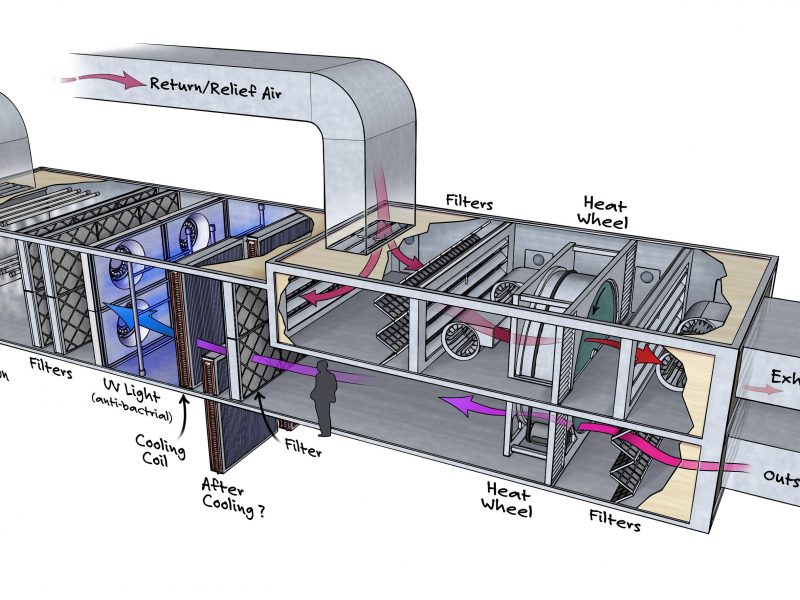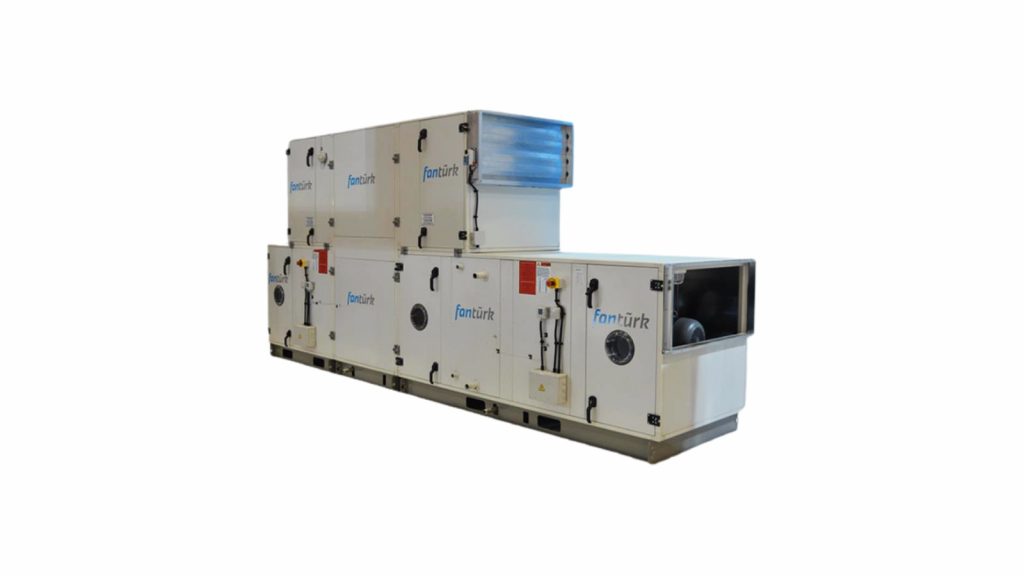
AHU Working Principle: The Key to Efficient HVAC Systems
Air handling units (AHUs) are essential components of HVAC systems. They are responsible for controlling the flow, temperature, and quality of air within buildings, ensuring optimal comfort and indoor air quality for occupants.
In this article, we will explore the working principle of AHUs, the different components of AHUs, and the factors to consider when selecting and maintaining AHUs.
Working Principle of AHUs
The working principle of AHUs involves the intake of air from the building, conditioning the air to the desired temperature and humidity level, and distributing the conditioned air back into the building.
The AHU draws in air from the building through the return air duct, which is then filtered to remove any contaminants. The air is then conditioned through the use of heating or cooling coils, which regulate the temperature and humidity of the air. The conditioned air is then distributed throughout the building through the supply air duct.
The AHU also includes a fan that helps to circulate the air through the system, as well as control systems that monitor and adjust the temperature and humidity of the air.

Components of AHUs
Filter: The filter is responsible for removing contaminants from the air before it is conditioned and distributed throughout the building. Different types of filters are available, depending on the specific requirements of the building.
Heating or Cooling Coils: The heating or cooling coils are responsible for regulating the temperature and humidity of the air. The type of coil used will depend on the specific requirements of the building and the HVAC system.
Fan: The fan is responsible for circulating the air through the system. The type of fan used will depend on the specific requirements of the building and the HVAC system.
Control Systems: The control systems are responsible for monitoring and adjusting the temperature and humidity of the air, as well as controlling the operation of the fan and other components of the AHU.
Factors to Consider when Selecting and Maintaining AHUs
Building Size: The size of the building will impact the size and number of AHUs required. Larger buildings may require multiple AHUs to adequately condition and distribute air throughout the space.
Building Use: The use of the building will also impact the type and size of AHUs required. For example, a hospital or laboratory may require more robust systems due to the increased requirements for air quality control.
Energy Efficiency: Energy efficiency is an important factor to consider when selecting AHUs. Energy-efficient systems can help reduce energy costs and environmental impact.
Maintenance Requirements: Proper maintenance is essential for ensuring the longevity and optimal performance of AHUs. Regular maintenance tasks such as filter replacement, coil cleaning, and fan inspection should be performed as recommended by the manufacturer.
Maintaining AHUs
Proper maintenance is essential for ensuring the longevity and optimal performance of AHUs. Regular maintenance can help prevent breakdowns and costly repairs, and can also improve the energy efficiency and air quality of the system.
Some key maintenance tasks for AHUs include:
Regular filter replacement: Air filters should be replaced regularly to ensure optimal air quality and system performance.
Coil cleaning: Heating and cooling coils should be cleaned regularly to ensure optimal performance and prevent the buildup of contaminants.
Fan inspection: The fan and other components of the AHU should be inspected regularly to ensure proper functioning and prevent breakdowns.
Regular tune-ups: Regular tune-ups can help identify and address potential issues before they become larger problems.
Air handling units (AHUs) are essential components of HVAC systems, responsible for controlling the flow, temperature, and quality of air within buildings. By selecting and maintaining AHUs that are appropriately sized, energy-efficient, and properly maintained, building owners and occupants can enjoy optimal comfort and indoor air quality.
AHU Working Principle
